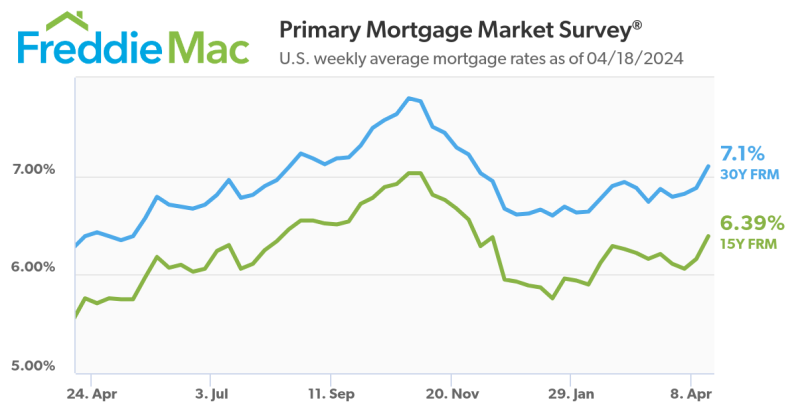Advertisement
Genworth Mortgage Insurance launches Web site
The future of demand: Trendsetters to watch (Part III)Joe AmorosoHispanics, bilingual approach, marketing
Reaching out to the Hispanic homebuyer
"The Latino market may not be for everybody - just those who want
to be in business in five years." I recently came across this quote
made by Gary Acosta, the immediate past chairman and co founder of
the National Association of
Hispanic Real Estate Professionals (NAHREP). It certainly
grabbed my attention.
In my three part series on the future of demand, I've examined
the home buying trends and economic impact of baby boomers and echo
boomers, and single women. For the final installment, I'm putting
the spotlight on one of the biggest areas of potential growth for
the mortgage industry, namely, the Hispanic market.
According to the U.S. Census
Bureau, there are more than 37 million Hispanics in the country
(roughly 13 percent of the population) and they represent the
fastest growing minority. Hispanic households are projected to
account for approximately one third of the 26 million increase in
households until 2020.
Since this demographic is also young - 50 percent of Latinos are
under the age of 25 and 70 percent are under the age of 36 - there
is great opportunity to reach out to these potential customers.
Over the next 20 years, this group is expected to have the
biggest surge in buying power. From 1990 to 2000, the number of
Hispanic households with an annual income of $100,000 or more rose
137 percent. Let that sink in.
If you don't already have a marketing strategy in place
targeting Hispanic buyers, now is the time to assess whether or not
it makes sense for you to position yourself over the long run. By
developing and investing in a strategic, bilingual approach that
speaks to the needs and preferences of Latino homebuyers, you may
be able to tap into an enormous potential to originate more
loans.
Become an educational resource
One of the best and simplest ways to engage Hispanic buyers is to
provide culturally sensitive and practical information.
NAHREP estimates that over the next six years, 40 percent of
first time homebuyers will be Hispanic. Like all first time buyers,
they are new to the entire mortgage process, which can be highly
intimidating. Become an educational ally. Help your customers
navigate the process and understand the steps and jargon involved
in financing a mortgage.
Take advantage of existing programs and resources. For example,
CreditSmart
Español is a nationwide, bilingual, instructor led
consumer credit education curriculum in which free workshops are
offered with flexible schedules. Research classes in your local
area and help get the word out through your marketing efforts or by
collaborating with local Hispanic agencies or organizations.
In addition, PMI
Mortgage Insurance Company now offers its online pre purchase
homebuyer education classes in Spanish via phone or online. Brokers
can enroll prospective borrowers by visiting their Web site.
Programs like these can be ideal for a broad range of Hispanic
consumers looking to obtain the knowledge and skills necessary to
effectively manage their money and credit, and to understand the
ins and outs of homeownership. By enhancing the financial literacy
of all homebuyers - Hispanics included - you can boost their
comfort level and ultimately earn their business.
Establish trust
Part of establishing trust is the educational component outlined
above. But many Hispanics tend not to trust financial institutions
and avoid debt. One of the most effective ways to establish trust
within the Latino community is to have loan officers who speak the
language. It's especially critical if you do business in Florida,
Texas, California, Arizona or New York. A whopping 75 percent of
all Latinos inhabiting in the United States live in these five
states.
Cultural cues are also important beyond language barriers. Train
your staff to reduce the formalities and become more personally
involved. Make sure that they take the time to verbally explain the
steps involved in the mortgage process.
Since family tends to be emphasized and highly valued in
Hispanic culture, consider offering customer service perks that go
beyond the norm. Set up a small play area for children, introduce
your entire staff or even provide free local phone service in your
office. Small things like these hold weight, generate referrals and
can distinguish you from your competitors.
Credit score and loan approval
flexibility
Another barrier many Latinos face when applying for a loan is a
lack of down payment history or funds coupled with a lack of
traditional credit history. These are two critical factors that
arise when examining credit scores and histories for mortgage
approval. To a large degree, traditional credit scoring techniques
fall short when it comes to accurately portraying creditworthiness.
For many Hispanics, mortgages are often family affairs with several
members taking part in the loan. Multiple families may live
together and pool their income to qualify.
Brokers willing to go the extra mile to get these customers
approved with limited documentation stand to benefit. Since there
is a large long term potential in this demographic, be flexible.
Ask customers for letters demonstrating that they have been paying
their bills and rent on time. Explain the process and ask the right
questions to streamline the experience for them.
The right products
Misconceptions can hurt your sales. According to Fannie Mae's 2002 National
Housing Survey, almost 40 percent of Latinos polled believed the
myth that a 20 percent down payment on the price of a home was
necessary up front.
To combat this, offer the right products that require low or no
down payments, including those offered by Fannie Mae. Many
customers will qualify for prime products, but to serve a wide
range of customer needs, you should also become highly versed in
flexible loan products, such as sub prime and alt A, no income no
asset and stated income loans. Also consider conforming products
including programs like MyCommunityMortgage or Flexible 97 or 100.
Additionally, Fannie Mae and Freddie Mac now jointly offer
83 Spanish translations of the Fannie Mae/Freddie Mac Uniform
Instruments at www.efanniemae.com. This can
be a great product resource for your customers.
The Hispanic market is one that is currently underserved, but it
has tremendous opportunity for growth. With its increasing economic
clout and sheer numbers, you should seriously consider entering or
enhancing your participation in this sector. By embracing a Latino
clientele, you can build loyal customers and become the first
broker of choice.
Joe Amoroso is senior vice president with Opteum Financial Services. He may
be reached by e-mail at [email protected].
About the author





